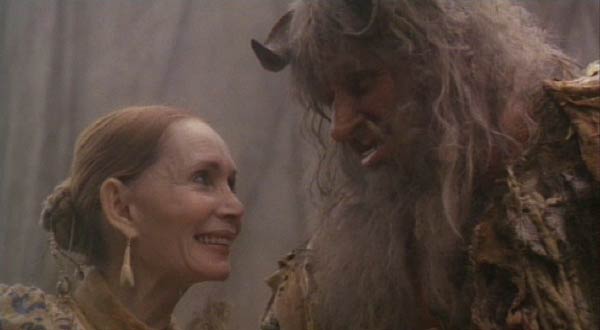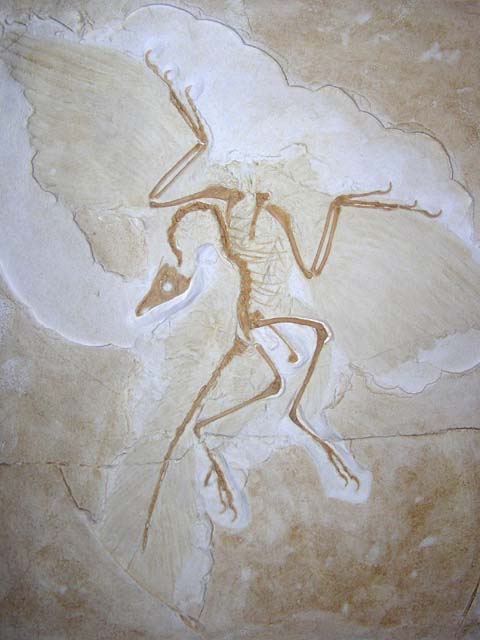 Conflict, says Ayn Rand, is the essence of plot. A plot requires struggle. Man can struggle with nature, with himself, and with other men. A struggle with nature provides a simple, one-sided plot. There is no psychological element, no conflict of human values in such a struggle. A struggle with oneself can be very dramatic, but it affords limited scope unless it is played out in the context of a wider struggle with others. It is in conflict with others that the widest range of plot developments are available. And one of the most popular, if not profound, scenarios for a dramatic plot is the crime story. Inherent in a crime story is the conflict between the criminal and his victim, necessarily with opposing interests.
Conflict, says Ayn Rand, is the essence of plot. A plot requires struggle. Man can struggle with nature, with himself, and with other men. A struggle with nature provides a simple, one-sided plot. There is no psychological element, no conflict of human values in such a struggle. A struggle with oneself can be very dramatic, but it affords limited scope unless it is played out in the context of a wider struggle with others. It is in conflict with others that the widest range of plot developments are available. And one of the most popular, if not profound, scenarios for a dramatic plot is the crime story. Inherent in a crime story is the conflict between the criminal and his victim, necessarily with opposing interests.The femme fatale is a particularly interesting type of character. In the crime story with a femme fatale we have not only the criminal element, with its dimension of good versus evil, we also have a shared romantic interest between the hero and the villain, as well as a conflict in the hero's values. If the hero has a love interest in the villain, then he must struggle "with" her while struggling against her. He may want to love her, but have to kill her. This leads to an internal struggle within the her which allows the dramatist to explore the hero's motivations and to develop his character.
 The first femme fatale movie that I would like to examine is Romeo is Bleeding with two of my favorite actors, Gary Oldman (Jack Grimaldi) and Lena Olin (Mona Demarkov). Grimaldi is a cop on the take, working for the NYPD and the Italian Mafia. He has a wife, (Annabella Sciorra) a mistress (Juliette Lewis) and several hundred thousand in cash buried in his back yard. The mob hires him to kill Demarkov, who is being held by the police in a Brooklyn safe-house, but instead, she seduces him and he is found by his colleagues in a compromising position.
The first femme fatale movie that I would like to examine is Romeo is Bleeding with two of my favorite actors, Gary Oldman (Jack Grimaldi) and Lena Olin (Mona Demarkov). Grimaldi is a cop on the take, working for the NYPD and the Italian Mafia. He has a wife, (Annabella Sciorra) a mistress (Juliette Lewis) and several hundred thousand in cash buried in his back yard. The mob hires him to kill Demarkov, who is being held by the police in a Brooklyn safe-house, but instead, she seduces him and he is found by his colleagues in a compromising position.Demarkov is a case study in Ayn Rand's dictum that in a struggle between criminals, where the initiation of force determines the mode of interaction, the more ruthless will win. While Jack wants to live a life of crime while keeping the benefits of middle-class domesticity, Demarkov is fully depraved and uncompromisingly brutal. A succubus (she literally ends up sitting on Grimaldi's chest in almost all of their indoor scenes) she combines intelligence and ravishing beauty with the soul of a psychopath. She taunts Jack with the possibility of a partnership. Mona has her charms. She is exotic, brilliant, glamorous, and seems fully self-assured. But when she finally tells Jack of her first "love," and how she left his body on the beach where they had their one encounter, we see that Grimaldi's hope for a possible match is nothing more than fatal wishful thinking.

This fast-paced and very sytlized movie while not gorey in the sickening manner of a horror film, is incredibly violent, so much so as to be over the top. Yet, as it always furthers the plot, the brutality is not gratuitous. We see Grimaldi strangled, bloodied and maimed. Demarkov is shot and loses a limb. Mob Boss Don Falcone (Roy Scheider) gets his comeuppance in a darkly humorous scene.

It is Lena Olin's sultry black widow performance that has made this movie a cult classic. In a climactic scene, where Demarkov has captured and handcuffed Grimaldi to a bed, baring her prosthetic arm, asks as she mounts him, "with or without?" The answer is without.
For movie stills, see http://lenaolin.net/romeo.html
Here is the theatrical trailer:
Read Femmes Fatales, Part II
 Well, I got a great response to my prior post, and a lot of advice and comments. It turns out that the
Well, I got a great response to my prior post, and a lot of advice and comments. It turns out that the  The first painting in this post, in blue above, is
The first painting in this post, in blue above, is 

 Terry Gilliam’s live action fantasy,
Terry Gilliam’s live action fantasy, 
 If you remember this from your childhood, it should bring a tear to your eye. In response to my post on
If you remember this from your childhood, it should bring a tear to your eye. In response to my post on  You won't find him listed at Wikipedia in either English or his native Spanish. You won't find him hanging in the Met. You won't find much of anything about him nowadays. But his work was collected by the Duke and Duchess of Windsor. He painted the portrait of the future King Juan Carlos of Spain. Ayn Rand praised his clarity and sense of the essential, describing him as a favorite. During his time he was compared with Picasso and Dalí. Today he is all but forgotten. He is José Manuel Capuletti, 1925-1976, painter, photographer and designer.
You won't find him listed at Wikipedia in either English or his native Spanish. You won't find him hanging in the Met. You won't find much of anything about him nowadays. But his work was collected by the Duke and Duchess of Windsor. He painted the portrait of the future King Juan Carlos of Spain. Ayn Rand praised his clarity and sense of the essential, describing him as a favorite. During his time he was compared with Picasso and Dalí. Today he is all but forgotten. He is José Manuel Capuletti, 1925-1976, painter, photographer and designer. Capuletti's style resmbles Salvador Dalí in execution, but his sense of life is more positive, lacking Dalí's frequent fascination with the morbid. He painted flamenco dancers, bull-fighters, sports figures and performers. Most of his work is privately held. Books on him are out of print. Some of his art was recently sold by Quent Cordair Fine Art. Very little is available on the web. Above is a portrait of his wife, Pilar. To the right is his "Mujer de los Caracoles" (Women of the Snails) which is the only painting that has ever made me laugh out loud. Read about him at Peter Cresswell's
Capuletti's style resmbles Salvador Dalí in execution, but his sense of life is more positive, lacking Dalí's frequent fascination with the morbid. He painted flamenco dancers, bull-fighters, sports figures and performers. Most of his work is privately held. Books on him are out of print. Some of his art was recently sold by Quent Cordair Fine Art. Very little is available on the web. Above is a portrait of his wife, Pilar. To the right is his "Mujer de los Caracoles" (Women of the Snails) which is the only painting that has ever made me laugh out loud. Read about him at Peter Cresswell's 
 Regularly rated Britain's best sitcom,
Regularly rated Britain's best sitcom,  The characters of Fawlty Towers also include Fawlty's shrewish wife Sybil, whom he describes as his "toxic midget", his "little piranha fish" and able "to kill a man at 10 paces with one blow of her tongue" and the Spanish waiter and bellboy Manuel whose profound incomprehension of English and slapstick manner make him a comedy legend. Perhaps Manuel's funniest performance is in what I believe is one of the best Fawlty Tower's
The characters of Fawlty Towers also include Fawlty's shrewish wife Sybil, whom he describes as his "toxic midget", his "little piranha fish" and able "to kill a man at 10 paces with one blow of her tongue" and the Spanish waiter and bellboy Manuel whose profound incomprehension of English and slapstick manner make him a comedy legend. Perhaps Manuel's funniest performance is in what I believe is one of the best Fawlty Tower's  Offered the crown by his troops, George Washington declined, and retired from the Continental Army once the War of Independence was won. Elected his nation's first president, Washington served only two terms, setting a precedent for the peaceful transfer of power which has lasted for two centuries, even through civil war.
Offered the crown by his troops, George Washington declined, and retired from the Continental Army once the War of Independence was won. Elected his nation's first president, Washington served only two terms, setting a precedent for the peaceful transfer of power which has lasted for two centuries, even through civil war. 


 "Prease for you to crap hands and give cheering for Itchy Balls!" The Gorgeous Tiny Chicken Machine Show is a parody Japanese talk show developed for the Internet by Korean-American comedienne Kim Evey ("Kiko") and her husband Greg Benson. Developed specifically for YouTube, the show was picked up by Sony and now offers more than a dozen episodes of about five minutes each. The episodes feature absurdist comedy and frenetic antics. Comedy doesn't necessarily analyze well, the show is simply hilarious, and one's best introduction is just to watch it. Due to risk of choking, please
"Prease for you to crap hands and give cheering for Itchy Balls!" The Gorgeous Tiny Chicken Machine Show is a parody Japanese talk show developed for the Internet by Korean-American comedienne Kim Evey ("Kiko") and her husband Greg Benson. Developed specifically for YouTube, the show was picked up by Sony and now offers more than a dozen episodes of about five minutes each. The episodes feature absurdist comedy and frenetic antics. Comedy doesn't necessarily analyze well, the show is simply hilarious, and one's best introduction is just to watch it. Due to risk of choking, please 

 In this film, an homage to film noir, Foster plays a gifted child living alone in a rented New England home. Her nosey landlady Mrs. Hallet and the landlady's pedophile son Frank (Martin Sheen) question her on the absence of her father and otherwise threateningly intrude on her privacy. Foster, used to dealing with adults as an equal, faces a crisis when her landlady dies in a suspicious accident. Foster and her boyfriend hatch a scheme to allay the suspicion of the townfolk. The movie ends with a classic dark resolution of her difficulties with Frank Hallet. This film is a must see both for itself and as a vehicle for Foster. Here is an expository clip from YouTube:
In this film, an homage to film noir, Foster plays a gifted child living alone in a rented New England home. Her nosey landlady Mrs. Hallet and the landlady's pedophile son Frank (Martin Sheen) question her on the absence of her father and otherwise threateningly intrude on her privacy. Foster, used to dealing with adults as an equal, faces a crisis when her landlady dies in a suspicious accident. Foster and her boyfriend hatch a scheme to allay the suspicion of the townfolk. The movie ends with a classic dark resolution of her difficulties with Frank Hallet. This film is a must see both for itself and as a vehicle for Foster. Here is an expository clip from YouTube: The wisdom of the Greeks in a Saturday-morning-style cartoon?
The wisdom of the Greeks in a Saturday-morning-style cartoon?  Animation in Japan is a prestigious adult genre. Its subject matter can run from science-fiction to the comic to the erotic to the surreal. Reign: the Conqueror combines slash-and-hack violence with mythologized Greek history, surreal lanscapes, sex, and science-fiction. The series depicts or alludes to Pythagoras, Plato, Diogenes and Aristotle. We see Alexander's mother couple with a god in snake form. We hear his famous exchange with Diogenes the Cynic, who, when Alexander offered him any gift that Diogenes could name, famously asked Alexander to step aside and stop blocking the sunlight. We see him conceive the city Alexandria as a futuristic capital to an empire "worthy of his soul." The battle scenes are stylized but brutal. The animation satisfies the adult and the boy within the man. This is not proper entertainment for young children.
Animation in Japan is a prestigious adult genre. Its subject matter can run from science-fiction to the comic to the erotic to the surreal. Reign: the Conqueror combines slash-and-hack violence with mythologized Greek history, surreal lanscapes, sex, and science-fiction. The series depicts or alludes to Pythagoras, Plato, Diogenes and Aristotle. We see Alexander's mother couple with a god in snake form. We hear his famous exchange with Diogenes the Cynic, who, when Alexander offered him any gift that Diogenes could name, famously asked Alexander to step aside and stop blocking the sunlight. We see him conceive the city Alexandria as a futuristic capital to an empire "worthy of his soul." The battle scenes are stylized but brutal. The animation satisfies the adult and the boy within the man. This is not proper entertainment for young children. Frank Herbert's
Frank Herbert's  This song makes me think of purple and gold Christmas decorations, a long day at the beach, the slightly drunk feeling of being pleasantly tired from a full day of well-earned fun, a cool car-window breeze, fresh-from-the-oven pecan pie, a walk in the pine barrens, and a sunset of sky-blue pink. This song is glowing benevolence riding the rich vehicle of the voice of Natalie Merchant
This song makes me think of purple and gold Christmas decorations, a long day at the beach, the slightly drunk feeling of being pleasantly tired from a full day of well-earned fun, a cool car-window breeze, fresh-from-the-oven pecan pie, a walk in the pine barrens, and a sunset of sky-blue pink. This song is glowing benevolence riding the rich vehicle of the voice of Natalie Merchant Have you ever wondered where the author Ayn Rand got her name? The origin is disputed. Rand told acquaintances that the last name came from the Remington-Rand typewriter. But letters with the nom de plume Rand (her Birth name was Alisa Rosenbaum) exist from before the existence of the Remington-Rand company. Perhaps she simply liked Rand and chose it to match the initial of her last name.
Have you ever wondered where the author Ayn Rand got her name? The origin is disputed. Rand told acquaintances that the last name came from the Remington-Rand typewriter. But letters with the nom de plume Rand (her Birth name was Alisa Rosenbaum) exist from before the existence of the Remington-Rand company. Perhaps she simply liked Rand and chose it to match the initial of her last name. In the Kalevala, Aino is a maiden who is promised unwillingly to marry the magician Väinämöinen. Rather than wed him she drowns herself and becomes a water nymph. The Kalevala was compiled from folk songs by Elias Lönnrot in the 19th Century, a verse translation into English was made by John Martin Crawford, and the work greatly influenced J.R.R. Toliken, author of
In the Kalevala, Aino is a maiden who is promised unwillingly to marry the magician Väinämöinen. Rather than wed him she drowns herself and becomes a water nymph. The Kalevala was compiled from folk songs by Elias Lönnrot in the 19th Century, a verse translation into English was made by John Martin Crawford, and the work greatly influenced J.R.R. Toliken, author of  Back in 2001 an Indian friend (who had to leave the country after 9-11 when his work visa was not renewed) lent me the movie
Back in 2001 an Indian friend (who had to leave the country after 9-11 when his work visa was not renewed) lent me the movie  John Collier 1850-1934 was a famed portrait painter and figurative artist of the
John Collier 1850-1934 was a famed portrait painter and figurative artist of the  Ayn Rand, famous for her depiction of strong heroines, held that hero worship is the essence of femininity. But Collier's portraits of women tend rather to make them the object of adoration. I am not presenting here a criticism of Rand's theory but upon first seeing Tannhäuser, with the knight-poet kneeling before Venus, I spontaneously uttered "the essence of femininity."
Ayn Rand, famous for her depiction of strong heroines, held that hero worship is the essence of femininity. But Collier's portraits of women tend rather to make them the object of adoration. I am not presenting here a criticism of Rand's theory but upon first seeing Tannhäuser, with the knight-poet kneeling before Venus, I spontaneously uttered "the essence of femininity."
 Mankind has made first contact and among the four researchers sent to investigate the garden-world Lithia and its reptilian inhabitants is Father Ramon Ruiz-sanchez, SJ. The Jesuit botanist and doctor is the only member of the research team to oppose opening the world up for human intercourse. The Lithians, he suspects, may be too good to be true. Indeed, with their peaceful and proseprous society, more advanced in many ways than man, and in their total lack of any idea of faith or the divine, they imply that a sentient species can live the good life without religious revelation. These "unfallen" beings are not angels. Indeed, he fears, they may be a creation of the Devil, meant to tempt man into abandoning religion in light of their enlightened example.
Mankind has made first contact and among the four researchers sent to investigate the garden-world Lithia and its reptilian inhabitants is Father Ramon Ruiz-sanchez, SJ. The Jesuit botanist and doctor is the only member of the research team to oppose opening the world up for human intercourse. The Lithians, he suspects, may be too good to be true. Indeed, with their peaceful and proseprous society, more advanced in many ways than man, and in their total lack of any idea of faith or the divine, they imply that a sentient species can live the good life without religious revelation. These "unfallen" beings are not angels. Indeed, he fears, they may be a creation of the Devil, meant to tempt man into abandoning religion in light of their enlightened example..jpg) Father Ruiz-Sanchez returns to Earth with a precious and frightening cargo, the unhatched egg of a Lithian. Blessed with a genetic memory, his passenger will hatch and mature without Lithian care. But what will happen to an alien raised among men?
Father Ruiz-Sanchez returns to Earth with a precious and frightening cargo, the unhatched egg of a Lithian. Blessed with a genetic memory, his passenger will hatch and mature without Lithian care. But what will happen to an alien raised among men? I first heard Umm Kulthum sing in 2000. The "Arab world's most famous and distinguished singer of the 20th century" is an exotic and acquired taste for most Westerners. Her voice wails like a desert wind and booms like a landslide, conveying passion, longing, and betrayal like a Middle-Eastern war. Her weekly concerts, broadcast from Cairo, brought a moment of peace each Friday night until shortly before her death in 1975. Her funeral was attended by 4 million people. According to
I first heard Umm Kulthum sing in 2000. The "Arab world's most famous and distinguished singer of the 20th century" is an exotic and acquired taste for most Westerners. Her voice wails like a desert wind and booms like a landslide, conveying passion, longing, and betrayal like a Middle-Eastern war. Her weekly concerts, broadcast from Cairo, brought a moment of peace each Friday night until shortly before her death in 1975. Her funeral was attended by 4 million people. According to  The dog was first domesticated 15,000 years ago in north-east Asia by the ancestors of the
The dog was first domesticated 15,000 years ago in north-east Asia by the ancestors of the  Feeling broke, maybe need to borrow seven billion dollars? (That's 7,000,000,000 dimes.)
Feeling broke, maybe need to borrow seven billion dollars? (That's 7,000,000,000 dimes.) In Pedro Almodovar's
In Pedro Almodovar's  Both movies featue drama and struggle between women slinging guns as they ride.
Both movies featue drama and struggle between women slinging guns as they ride.  If I could nominate someone inspirational for Radicals for Happiness it would be Kallista Pappas for her performance at the 2008 Crossfit Games held on the 4th of July weekend. The format of the games was three timed workouts on Saturday (all three very demanding workouts) and the final workout on Sunday. The best cumulative time on all three workouts wins the games. Kallista wasn't in the running for top spot (she was only 14 years old) but she won the hearts of everyone at the games with the workout shown below. Thirty repetitions of clean and jerk with 100 pounds (she only weighs 103). At the start of this video the camera is on Jolie, the women's winner of last year's crossfit games. In the background you can see Kallista on her 23rd rep where she falls and the bar lands across her shins. Jolie finishes and the cameraman moves in to catch Kallista's finishing reps. You can read more about Kallista Pappas and other participants in the "Sport of Fitness" at
If I could nominate someone inspirational for Radicals for Happiness it would be Kallista Pappas for her performance at the 2008 Crossfit Games held on the 4th of July weekend. The format of the games was three timed workouts on Saturday (all three very demanding workouts) and the final workout on Sunday. The best cumulative time on all three workouts wins the games. Kallista wasn't in the running for top spot (she was only 14 years old) but she won the hearts of everyone at the games with the workout shown below. Thirty repetitions of clean and jerk with 100 pounds (she only weighs 103). At the start of this video the camera is on Jolie, the women's winner of last year's crossfit games. In the background you can see Kallista on her 23rd rep where she falls and the bar lands across her shins. Jolie finishes and the cameraman moves in to catch Kallista's finishing reps. You can read more about Kallista Pappas and other participants in the "Sport of Fitness" at  In 2003, in conjunction with the 40th anniversary of its long running science-fiction show Doctor Who, the BBC commisioned an animated story,
In 2003, in conjunction with the 40th anniversary of its long running science-fiction show Doctor Who, the BBC commisioned an animated story, 
 The question of immortality doesn't arise to animals, they can't conceive of time in the abstract or of their own deaths. But humans can look at both the distant future and the deep past. Indeed, every time you look at the sky, you see history. The stars of Orion, for instance, lie some 500 light years away, and ago.
The question of immortality doesn't arise to animals, they can't conceive of time in the abstract or of their own deaths. But humans can look at both the distant future and the deep past. Indeed, every time you look at the sky, you see history. The stars of Orion, for instance, lie some 500 light years away, and ago. Most of our vocabulary results from either our native stock inherited through Proto-Germanic or comes through other Branches like Greek and Latin, as well as Celtic, Slavic, Indo-Iranian and the like. Other Branches include Baltic, (e.g., Lithuanian,) Albanian and Armenian. And last century the extinct Hittite and Tocharian were discovered in Anatolia and Central Asia.
Most of our vocabulary results from either our native stock inherited through Proto-Germanic or comes through other Branches like Greek and Latin, as well as Celtic, Slavic, Indo-Iranian and the like. Other Branches include Baltic, (e.g., Lithuanian,) Albanian and Armenian. And last century the extinct Hittite and Tocharian were discovered in Anatolia and Central Asia. Saussure, using the scientific method, had predicted the sounds that existed in a language he had never heard, and that had been unspoken for millennia. Most people know linguistics as an exotic academic subject. Professor Doolittle in My Fair Lady springs to mind. No one can make money from historical linguistics. utterly impractical, it is a perhaps seen as pursuit of racists, cranks and the English upper class. Perhaps. But like the paleontologists impractical study of fossils, the astronomers impractical study of stars, and the historians impractical study of long forgotten wars, historical linguistics does have a connection with the human soul, one on the level of fine art, it connects us with the universe on a scale that far exceeds our here-and-now moment-bound existence. Far from showing us how small we are, such studies connect us with the timeless, and show how great is the mind of man. Such knowledge may not make us immortal, but it does connect us with the eternal.
Saussure, using the scientific method, had predicted the sounds that existed in a language he had never heard, and that had been unspoken for millennia. Most people know linguistics as an exotic academic subject. Professor Doolittle in My Fair Lady springs to mind. No one can make money from historical linguistics. utterly impractical, it is a perhaps seen as pursuit of racists, cranks and the English upper class. Perhaps. But like the paleontologists impractical study of fossils, the astronomers impractical study of stars, and the historians impractical study of long forgotten wars, historical linguistics does have a connection with the human soul, one on the level of fine art, it connects us with the universe on a scale that far exceeds our here-and-now moment-bound existence. Far from showing us how small we are, such studies connect us with the timeless, and show how great is the mind of man. Such knowledge may not make us immortal, but it does connect us with the eternal.
 Unrequited love, a style of dance that combines the grace of ballet and the energy of tap...is it Rand's lost novel
Unrequited love, a style of dance that combines the grace of ballet and the energy of tap...is it Rand's lost novel  As with many of his films, distinctive for their melodramatic plots and vibrant color, Pedro Almodóvar's 1995 Flower of My Secret (La flor de mi secreto) also features a dramatic musical performance however loosely tied to the plot structure. This movie tells the story of Leocadia, (Marisa Paredes) picured here with her elderly mother and her "crab-faced" sister, a writer of popular romance novels, who looses one love, and, in trying to switch to a more profound style of writing, finds a better. This is one of Almodóvar's best films, if one of his least outlandish. One of the highlights is Joaquín Cortés and Manuela Vargas's interprative/flamenco dance performance to Miles Davis' "Solea" (Sketches of Spain) which can be seen here:
As with many of his films, distinctive for their melodramatic plots and vibrant color, Pedro Almodóvar's 1995 Flower of My Secret (La flor de mi secreto) also features a dramatic musical performance however loosely tied to the plot structure. This movie tells the story of Leocadia, (Marisa Paredes) picured here with her elderly mother and her "crab-faced" sister, a writer of popular romance novels, who looses one love, and, in trying to switch to a more profound style of writing, finds a better. This is one of Almodóvar's best films, if one of his least outlandish. One of the highlights is Joaquín Cortés and Manuela Vargas's interprative/flamenco dance performance to Miles Davis' "Solea" (Sketches of Spain) which can be seen here: Why do people born in the peaceful California wine valley of Santaroga seldom leave, and always return? Why do passers through rarely stop, and visitors never stay? Why do outside business interests find it impossible to establish a beach head? What makes Santaroga's wine and cheese from the Jaspers Co Op so special, yet immune to analysis? Why have the last two market researchers sent there died under mysterious circumstances? And why is the latest, Gilbert Dasein, the victim of three near fatal accidents within his first 24 hours in the valley?
Why do people born in the peaceful California wine valley of Santaroga seldom leave, and always return? Why do passers through rarely stop, and visitors never stay? Why do outside business interests find it impossible to establish a beach head? What makes Santaroga's wine and cheese from the Jaspers Co Op so special, yet immune to analysis? Why have the last two market researchers sent there died under mysterious circumstances? And why is the latest, Gilbert Dasein, the victim of three near fatal accidents within his first 24 hours in the valley? Did you know that Queen Isabella was interested in the marsupials, or that it was once believed that marsupials copulated nasally and sneezed the newborn into their pouches?
Did you know that Queen Isabella was interested in the marsupials, or that it was once believed that marsupials copulated nasally and sneezed the newborn into their pouches? The section heads of the 42 page Introduction include: Taxonomy & Evolution, Morphology, Reproduction, Distribution & Diversity, Diet, Life History, Economic & Ecologic Importance, and Conservation, as well as References.
The section heads of the 42 page Introduction include: Taxonomy & Evolution, Morphology, Reproduction, Distribution & Diversity, Diet, Life History, Economic & Ecologic Importance, and Conservation, as well as References. The main text examines each of the known marsupial genera, with at least one photo per genus, including the tragically lost Tasmanian "tiger" and all known (recent) species are named. Fossil forms are excluded.
The main text examines each of the known marsupial genera, with at least one photo per genus, including the tragically lost Tasmanian "tiger" and all known (recent) species are named. Fossil forms are excluded. Given that there are no maps, no drawings of internal or reproductive anatomy, no illustrations of such fantastic extinct forms as the marsupial "lion" Thylacoleo, or any other visual aids except the black and white "field-guide" photos, it is absolutely bizarre that the editors included a bare-boned appendix giving the geological timeline back to the Permian and four pages of metric/U.S. conversions with a 47 inch/1200 mm ruler (broken up into 10 segments to fit the page width!) instead.
Given that there are no maps, no drawings of internal or reproductive anatomy, no illustrations of such fantastic extinct forms as the marsupial "lion" Thylacoleo, or any other visual aids except the black and white "field-guide" photos, it is absolutely bizarre that the editors included a bare-boned appendix giving the geological timeline back to the Permian and four pages of metric/U.S. conversions with a 47 inch/1200 mm ruler (broken up into 10 segments to fit the page width!) instead.